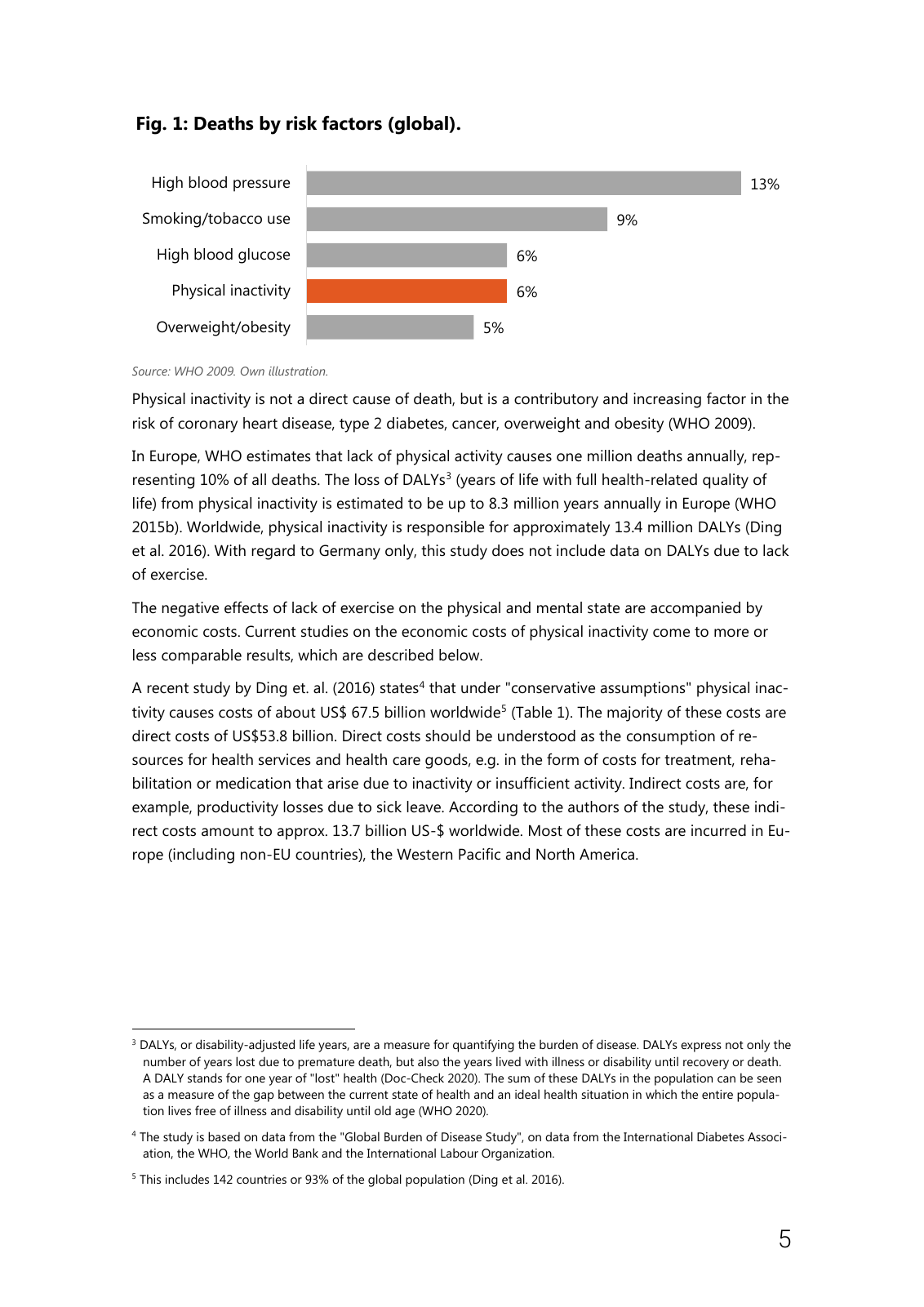5 Fig 1 Deaths by risk factors global Source WHO 2009 Own illustration Physical inactivity is not a direct cause of death but is a contributory and increasing factor in the risk of coronary heart disease type 2 diabetes cancer overweight and obesity WHO 2009 In Europe WHO estimates that lack of physical activity causes one million deaths annually rep resenting 10 of all deaths The loss of DALYs3 years of life with full health related quality of life from physical inactivity is estimated to be up to 8 3 million years annually in Europe WHO 2015b Worldwide physical inactivity is responsible for approximately 13 4 million DALYs Ding et al 2016 With regard to Germany only this study does not include data on DALYs due to lack of exercise The negative effects of lack of exercise on the physical and mental state are accompanied by economic costs Current studies on the economic costs of physical inactivity come to more or less comparable results which are described below A recent study by Ding et al 2016 states4 that under conservative assumptions physical inac tivity causes costs of about US 67 5 billion worldwide5 Table 1 The majority of these costs are direct costs of US 53 8 billion Direct costs should be understood as the consumption of re sources for health services and health care goods e g in the form of costs for treatment reha bilitation or medication that arise due to inactivity or insufficient activity Indirect costs are for example productivity losses due to sick leave According to the authors of the study these indi rect costs amount to approx 13 7 billion US worldwide Most of these costs are incurred in Eu rope including non EU countries the Western Pacific and North America 3 DALYs or disability adjusted life years are a measure for quantifying the burden of disease DALYs express not only the number of years lost due to premature death but also the years lived with illness or disability until recovery or death A DALY stands for one year of lost health Doc Check 2020 The sum of these DALYs in the population can be seen as a measure of the gap between the current state of health and an ideal health situation in which the entire popula tion lives free of illness and disability until old age WHO 2020 4 The study is based on data from the Global Burden of Disease Study on data from the International Diabetes Associ ation the WHO the World Bank and the International Labour Organization 5 This includes 142 countries or 93 of the global population Ding et al 2016 13 9 6 6 5 High blood pressure Smoking tobacco use High blood glucose Physical inactivity Overweight obesity

Hinweis: Dies ist eine maschinenlesbare No-Flash Ansicht.
Klicken Sie hier um zur Online-Version zu gelangen.
Klicken Sie hier um zur Online-Version zu gelangen.